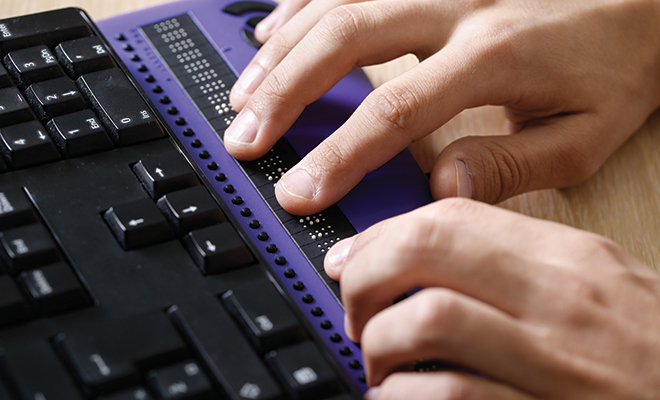
Assistive Devices Provide Innovations for Living Well
Adaptive or assistive technology has been around for quite some time, but as advances in technology are made, simple devices such as the cane or crutches make way for new products and devices that have science fiction written all over them.
While knee scooters and walkers certainly have their place in the world, they are just the tip of the iceberg when it comes to exciting innovations in the arena of assistive devices, especially when they’re partnered with the fast-growing field of technology.
There are countless individuals who suffer from any number of conditions, ailments, illnesses and diseases that prevent them from enjoying a full life, and living with a physical disability or certain physical limitations is certainly a challenge. If you or a loved one are struggling with such limitations, devices specifically known as assistive technology are redefining what it means to live an independent lifestyle despite major or minor physical limitations.
Lend-a-Hand, for example, is the first and only universal assistive device developed by Even Par Enterprises, Inc. It was created by Mike Duncan, a Vietnam veteran, to help the physically challenged and able-bodied individual. This unique device is a sleeve that is strapped over the arm, providing additional support, leverage and strength as the person undertakes tasks such as painting, raking, sweeping, fishing, cooking and other day-to-day activities.
“This is perfect for so many people struggling with physical limitations, including stroke survivors, amputees and those living with cerebral palsy,” noted Duncan. “The market has no device at this time that allows a person to do multiple tasks with just this one product. This gives people the ability to function and to live life again. It gives back a part of life that has been taken from them and allows them to do those things they were able to do before they had any physical limitations.”
There are numerous other companies on the market today with high-tech devices that can be used by those with diseases or disabilities to communicate and perform tasks that would otherwise by quite difficult or even impossible. Among the many exciting devices are eye-tracking products that control keys on a screen to type or to move a mouse, deaf-blind communication telephones and even Braille displays. High-tech assistive devices may seem like something out of this world, but they are helping individuals with challenges live full and productive lives.
The DynaVox EyeMax System gives individuals with paralysis, cerebral palsy and stroke limitations the ability to create spoken communication by using only their eyes. By using a sophisticated eye tracking system, users can interact with an online screen keyboard, which enables them to enter words and phrases that are then translated into spoken text.
For the visually impaired, traveling alone can be a challenge, whether one is going just down the street or across the country. The Kapten PLUS Personal Navigation Device is a small GPS locator designed to be carried on the person. As the user walks down a street, the device speaks location and direction. This is also a great GPS accessory for those who use a cane or guide dog. It allows people who are blind or visually impaired the ability to travel independently without the anxiety of getting lost or going in the wrong direction.
Then there is the cochlear implant. While it’s not a new product, the software and hardware that accompany it are continually being improved. By picking up sound via a microphone, it carries the signal to a small computer worn behind the ear, which transfers it to a digital signal and then to the implant itself. That will then directly stimulate the auditory nerve, allowing for a new means of auditory sensory input. Because technology has advanced greatly in this regard, voices can be heard with enough clarity that they are readily understood and identified, making oral communication not only possible, but also productive.
How about the iBot? This self-balancing, stair-climbing wheelchair allows its user to navigate stairs effortlessly, giving people who use wheelchairs the freedom to navigate almost any terrain. Consider this the ATV of wheelchairs, and while it is not currently in production, Toyota Motor Company and Dean Kamen, inventor of the Segway, have announced plans to produce an improved version of Kamen’s 1999 iBot.
Physical limitations should not always equate to hindrances. With the future of technology practically at our doorstep, there are many ways to explore and overcome, or at least reduce, the impact of physically limiting conditions. Today, countless people with disabilities are breaking barriers through the use of assistive technology that gives them greater control over their lives and allows them to participate in and contribute more fully to activities at home, school, work and in their communities. ■
Sources: afb.org, digitaltrends.com, evenparenterprises.com, leaderdog.org and mashable.com.







